Pope Leo XIV: A Missionary Pope for a Changing World
From the slums of Peru to the Chair of Peter, Pope Leo XIV leads the Church with humility, compassion, and a bold vision for evangelization, justice, and global unity.
From the slums of Peru to the Chair of Peter, Pope Leo XIV leads the Church with humility, compassion, and a bold vision for evangelization, justice, and global unity.
Who is Pope Leo XIV?
The election of Pope Leo XIV on May 8, 2025, marked the ascent of the first American-born and first Augustinian pope to the Chair of Peter. Born Robert Francis Prevost in Chicago, his path to the papacy was profoundly shaped by over two decades of missionary service in Peru, reflecting a life dedicated to evangelization and pastoral care.
Early Life and Vocation
Robert Francis Prevost was born on September 14, 1955, in Chicago, Illinois, to Louis Marius Prevost and Mildred Martínez. Raised in Dolton, a working-class suburb, he was the youngest of three boys in a devout Catholic family. In several interviews during the days after his election, his brother John often remembered a prophetic moment in first grade, when a neighbor told young Rob he would become the first American pope.
Known as “Rob” to family and “Bob” to friends, he grew up serving at the altar of St. Mary of the Assumption Parish and singing in the choir. He attended St. Augustine Seminary High School in Michigan, earned a math degree at Villanova University, then a Master of Divinity in Chicago and a Doctorate in Canon Law in Rome. His academic work focused on Augustine’s idea of religious authority as service, not power—a vision that shaped his leadership.
He was ordained a priest on June 19, 1982, at the Augustinian College of Saint Monica in Rome by Archbishop Jean Jadot.


What shaped his mission and leadership?
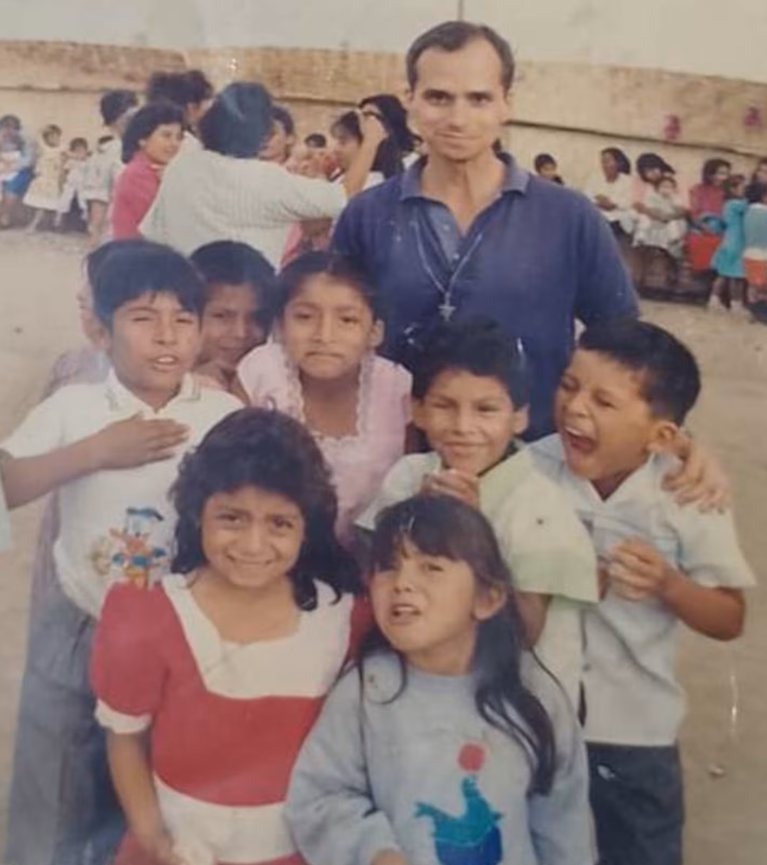
In 1985, Father Prevost was sent to Peru as a missionary. There, in a region plagued by guerrilla violence and poverty, he became a deeply rooted pastoral figure. “Had he stayed in his native country, I think his sense of the Church would’ve been very different,” said Aldo Llanos, a professor of philosophy and anthropology at Peru’s University of Piura. “But he came to Peru in 1985—a country in crisis—and was changed by it. That experience left a mark.”
He became a Peruvian citizen in 2015, fulfilling a requirement for his appointment as bishop. He led formation programs for Augustinians, taught theology, and served as a judge in the regional ecclesiastical court. He was known for pragmatic compassion, scholarly rigor, and a quiet charisma.

Affectionately known as the “Saint of the North,” Father Prevost stood out for his humanitarian outreach in northern Peru:
-
Supported soup kitchens to feed vulnerable communities
-
Advocated for better housing in areas prone to flooding
-
Collaborated closely with local charities and social outreach programs
-
Led the “Oxygen of Hope” campaign during the COVID-19 pandemic, delivering oxygen plants to overwhelmed hospitals
-
Organized aid for Venezuelan migrants and publicly denounced discrimination against them
“He was a missionary in the truest sense of the word: When he gave food to the hungry, drink to the thirsty, welcomed the stranger, clothed the naked, cared for the ill and visited the imprisoned, Bishop Prevost did so because in each of these he saw Christ, and also someone thirsting for Christ,” remarked Professor Llanos.
From Missionary to Pope: A Journey of Service
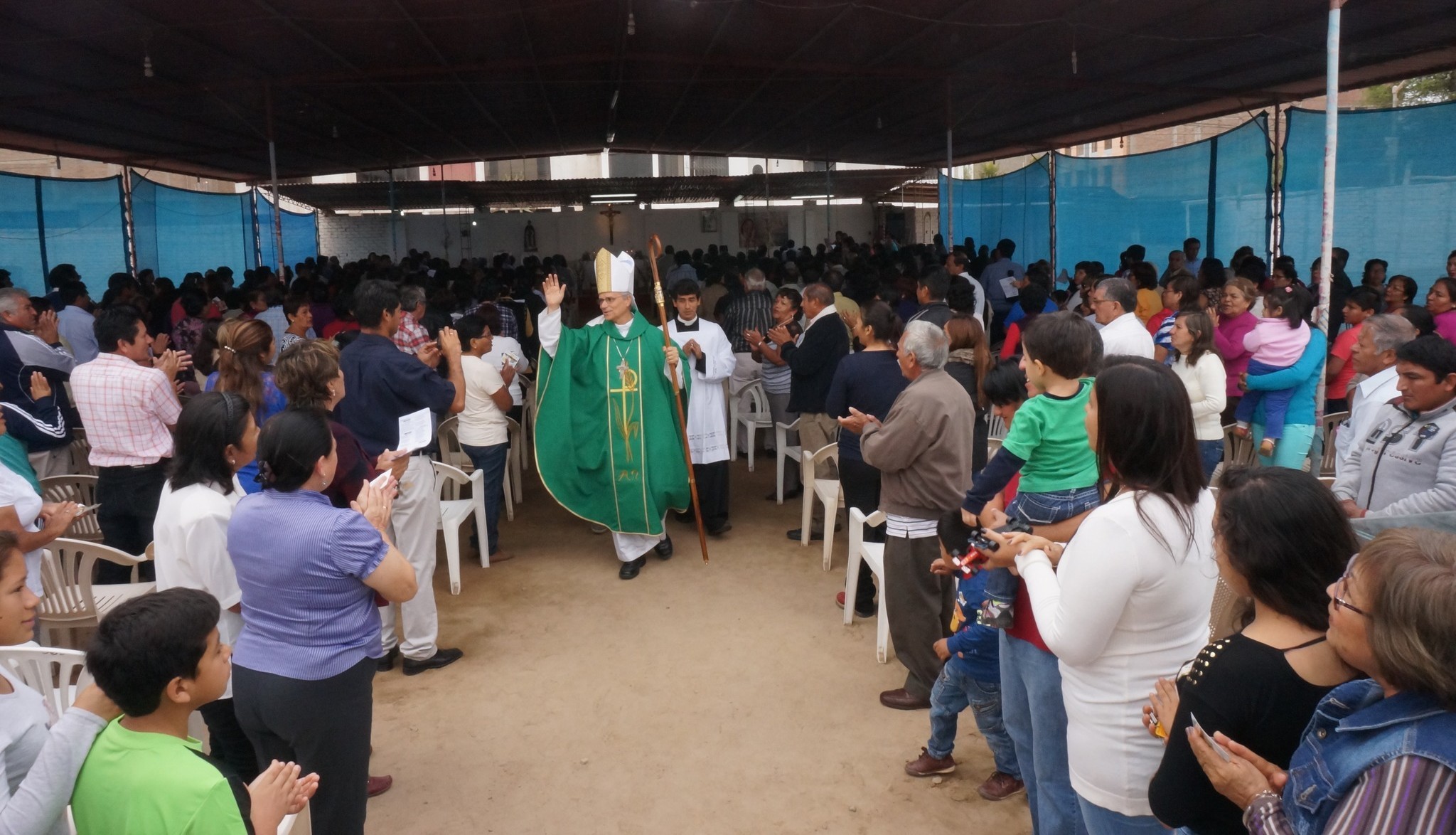
The Augustinian Pope
His election sparked “joyful disbelief” among his Augustinian brothers. “He’s someone who walks with people, who brings them along on the journey,” said Father Joseph Farrell, Vicar General for the Augustinians North America circumscription. “That’s what mission is.”
Father Prevost’s leadership within the Augustinian Order was deeply formative. In 1999, he was elected Provincial Prior of the Augustinian Province of “Mother of Good Counsel” in Chicago. Just two and a half years later, he was elected Prior General of the worldwide Order of Saint Augustine—a role he held for two consecutive terms, from 2001 to 2013. During that time, he oversaw Augustinian communities in nearly 50 countries and promoted their educational, pastoral, and missionary work (Vatican News).
Father Eduardo Martín Clemens, who served with him in Trujillo, said he embodied “the pragmatism of a North American and the open heart of Latin America.” He was known for a pastoral approach to canon law and a theology shaped by Augustine’s vision of unity and humility.
In his first public words, Pope Leo XIV quoted St. Augustine: “For you, I am a bishop; with you, I am a Christian.”
..
A single Mass celebrated for your specific intention—whether for the living, deceased, or special needs. Your offering provides essential support for one day’s ministry in mission territories.
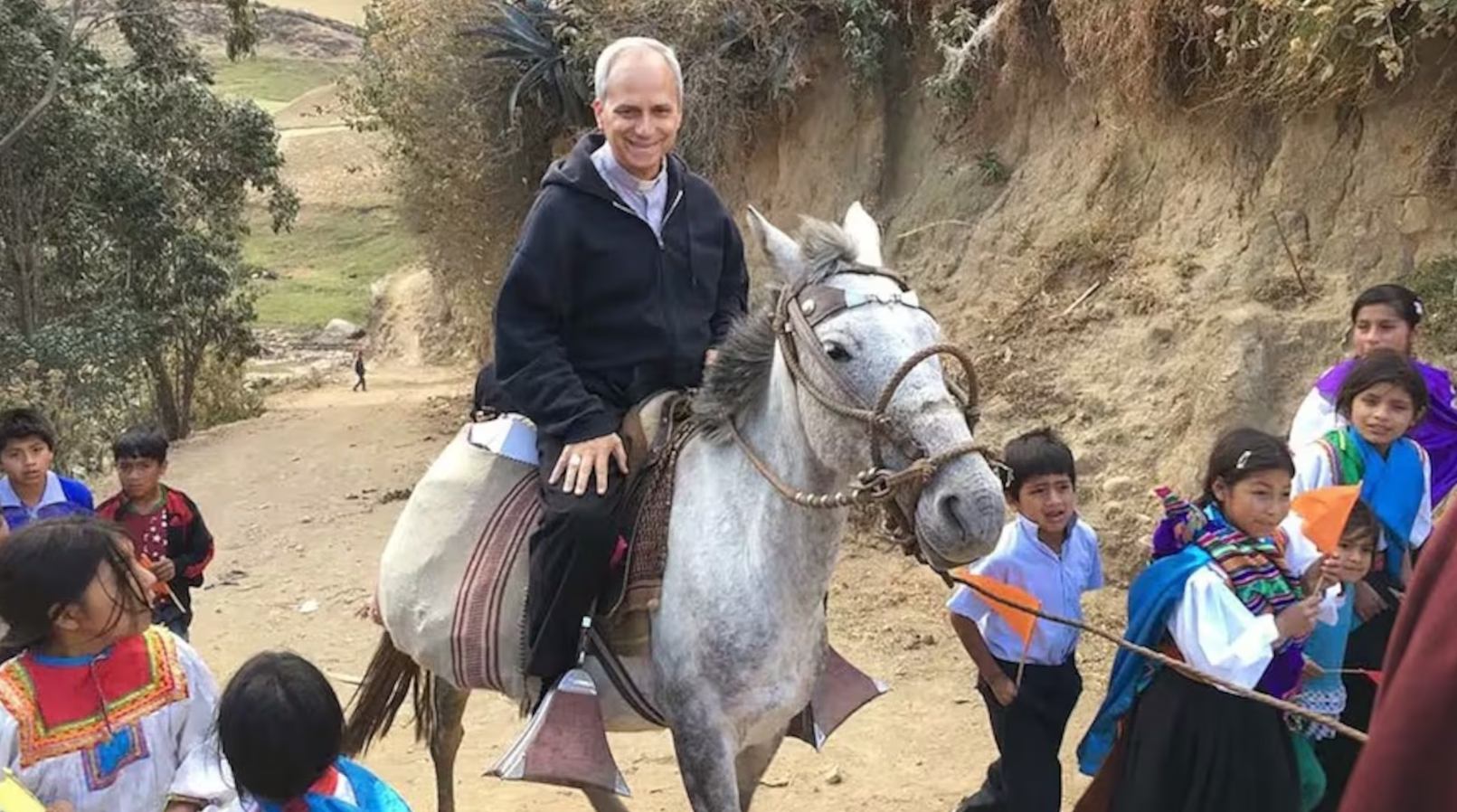
A Shepherd During Crisis
“Bishop Prevost was never the kind of bishop who gave orders from behind a desk,” said Janinna Sesa Córdova, Director of Caritas Chiclayo from 2014 to 2024. “He was the face of Christ, the one who went out into the mud to help his people.”
“He has left an indelible mark on the hearts of Chiclayo,” Córdova said. “Because he was always there—in the floods, the pandemic, the celebrations, and the sorrows. A bishop of the people. A true shepherd.”
He was a hands-on bishop, ready to “come out in boots and a poncho,” said Professor Llanos, a layman from Opus Dei who also worked with then Bishop Prevost, while “when it was time for Mass, he was impeccably vested — a symbol of his ecclesial balance and reverence.”
The fact that as the country was locking down during the pandemic, he walked across the city carrying the Blessed Sacrament, much like Pope Francis had done in St. Peter’s Square during that historic blessing to the world in March 2020, “made it clear that all his charitable endeavors were rooted in Christ,” said Córdova, who helped him coordinate most of the Church’s charitable campaigns at the time.
Three consecutive Masses offered for your intentions, following the sacred tradition of the triduum. This powerful prayer brings your needs before God through three days of continuous intercession.
…

Vatican Leadership Rooted in Mission
In 2023, Pope Francis appointed Cardinal Prevost as Prefect of the Dicastery for Bishops and President of the Pontifical Commission for Latin America. The Dicastery is responsible for identifying and supporting episcopal leadership around the world—essentially helping to discern who becomes a bishop—while the Commission serves as a bridge between the Holy See and the Church in Latin America, fostering communion and cooperation across the continent.
His elevation to the College of Cardinals that same year solidified his role as one of Pope Francis’ most trusted collaborators.
Cardinal Prevost’s diplomacy and pastoral sensitivity were particularly evident during the Synod on Synodality assemblies in 2023 and 2024, where his presence left a lasting impression on many of the participants.
José Manuel De Urquidi, a lay delegate from Mexico and founder of the Juan Diego Network, a platform that amplifies Catholic voices in Spanish-speaking communities, said Cardinal Prevost brought an “incredible calm and attention to the bishops, especially those coming from remote or under-resourced dioceses.” He added, “He cares deeply about people—especially about the missionaries from all over the world.”
Thirty consecutive Masses traditionally offered for the eternal rest of a departed soul. This ancient practice, blessed by Pope St. Gregory the Great, provides profound spiritual benefit and substantial mission support.
What does the name Pope Leo mean?
From the outset of his pontificate, Pope Leo XIV made it clear that he sees his role as a continuation of the Church’s mission to uphold human dignity, serve the poor, and proclaim the Gospel to all.
He chose the motto In Illo Uno Unum—“In the One Christ, we are one”—reflecting his desire to unify the Church across cultures, continents, and social divides.
In his first formal address to the College of Cardinals, delivered the Saturday following his election, Pope Leo explained his decision to take the name of Pope Leo XIII, who served from 1878 to 1903 and is widely considered the founder of modern Catholic social teaching.
“There are many reasons why I chose this name,” Pope Leo said, “but above all, I am inspired by Rerum Novarum.”
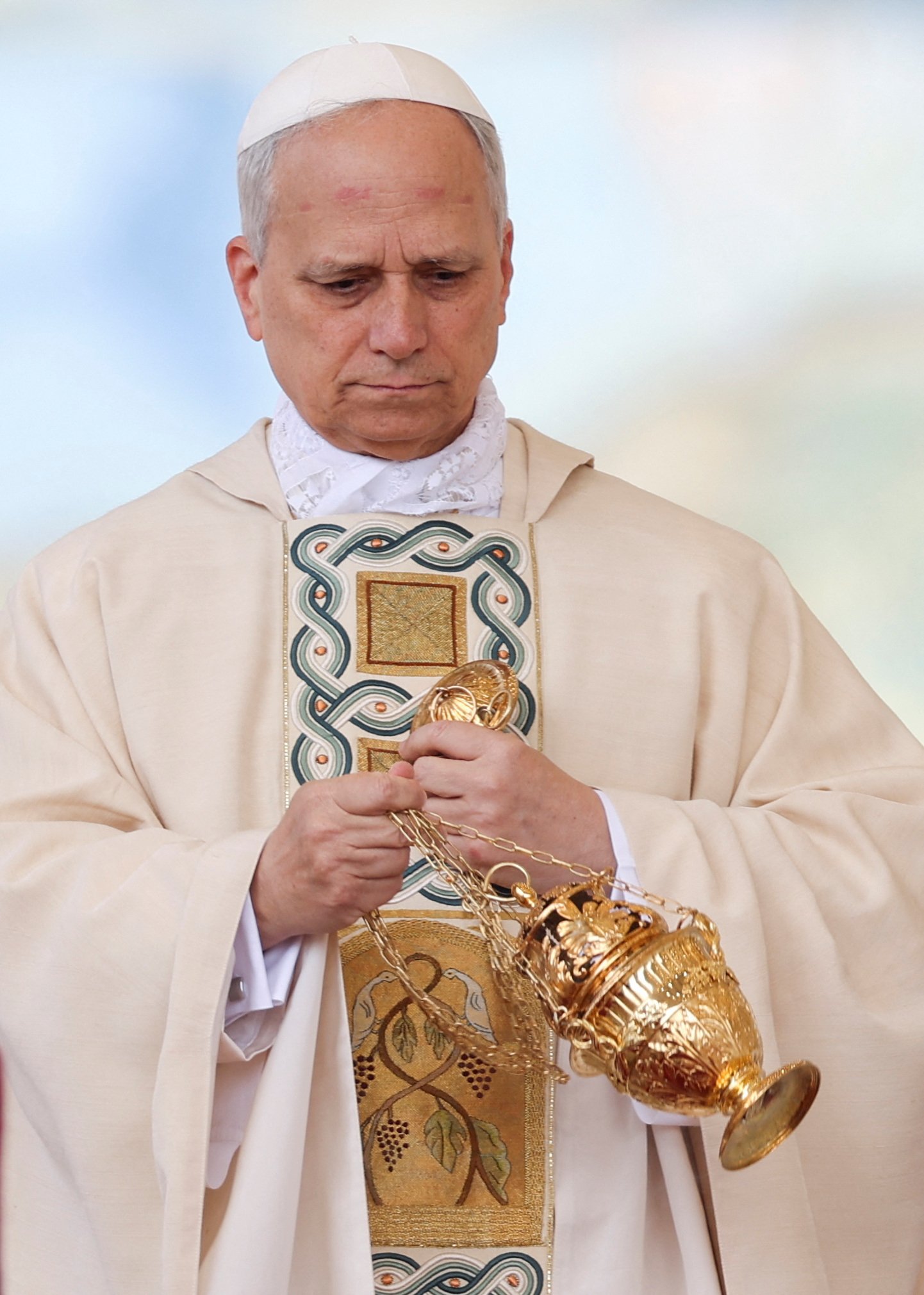

Pope Leo XIV, formed in the crucible of mission and schooled in the wisdom of Augustine, now leads a global Church. He is, as one missionary said, “a gift to the whole Church.” And to those who knew him in Chiclayo, he is still “a bishop of the people. A true shepherd.”
From the Missions to the Chair of Peter:
What was the path of Pope Leo?
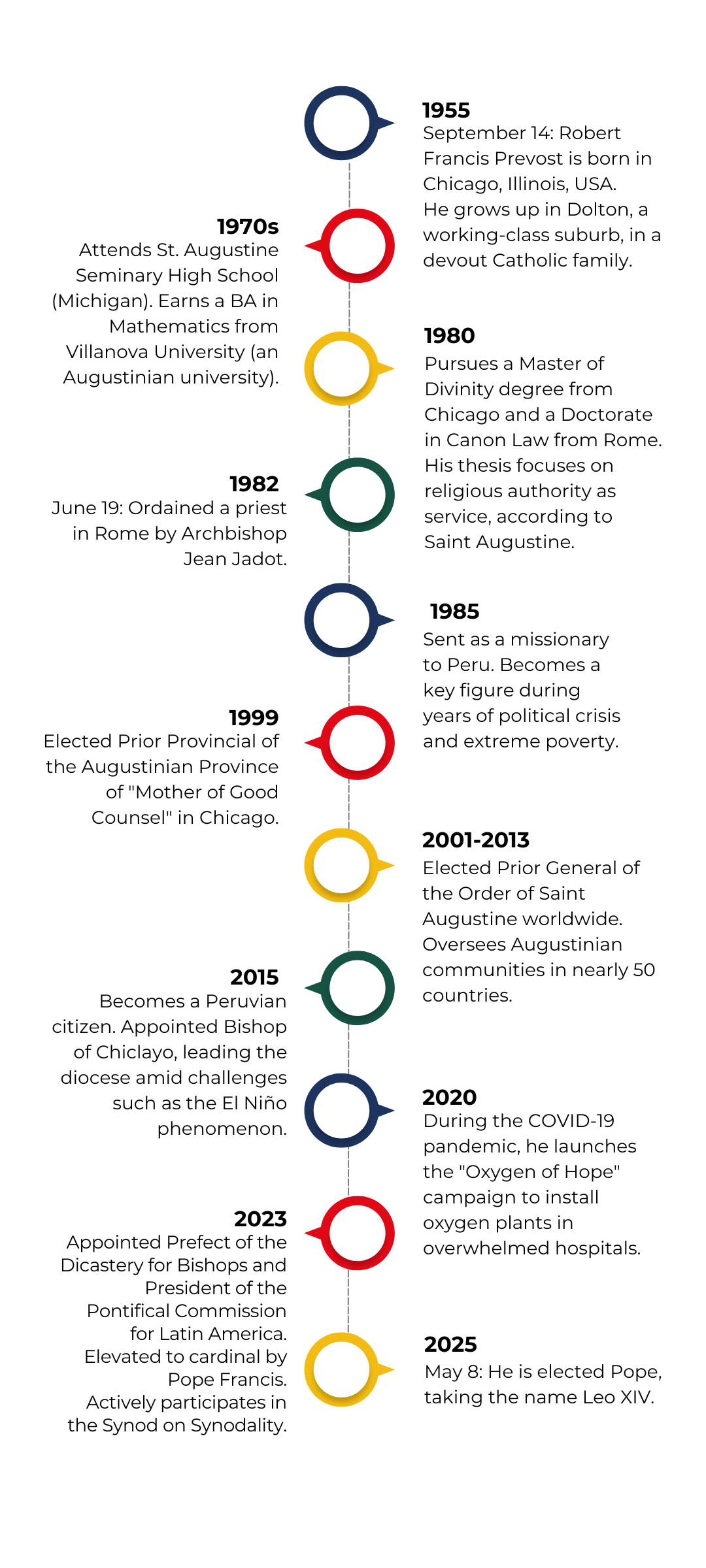
We invite you to continue reading more about Pope Leo XIV


